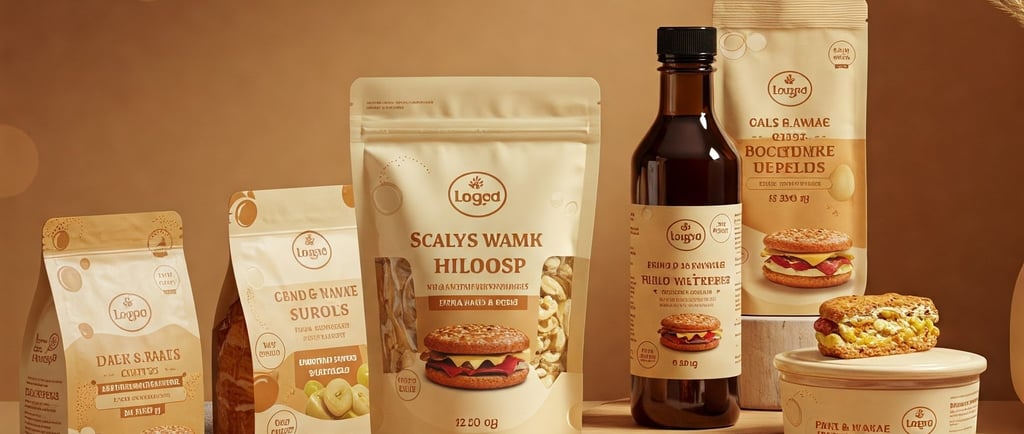The Psychology Behind Food Branding & Packaging


The psychology behind food branding and packaging plays a pivotal role in influencing consumer behavior, perceptions, and purchasing decisions. By strategically leveraging design elements such as color, shape, texture, and imagery, brands can evoke specific emotions and associations that resonate with their target audience.
Color Psychology in Food Packaging
Color is a fundamental aspect of packaging design, as it elicits emotional responses and conveys brand messaging. For instance, red is known to stimulate appetite and create a sense of urgency, making it a popular choice in food marketing. This association with excitement and energy can enhance consumer attraction to products.
Additionally, colors can evoke specific associations; for example, green often implies natural or organic products, while blue can suggest freshness and purity. Understanding these color-emotion connections enables brands to align their packaging with the desired consumer perceptions.
Shape and Texture: The Tactile Experience
The physical form and texture of packaging contribute significantly to consumer perceptions of quality and value. Unique shapes can make a product stand out on shelves, while certain textures can evoke luxury or comfort. For example, a matte finish might suggest sophistication, whereas a glossy surface can imply vibrancy and energy.
Moreover, the tactile experience of packaging can influence consumer behavior. Humans process a wealth of information through touch, and a package that feels sturdy and well-crafted can enhance the perceived value of the product inside.
Imagery and Typography: Crafting Brand Identity
Visual elements such as images and typography are crucial in communicating a brand's identity and values. Consistent use of fonts and logos fosters brand recognition and trust. For instance, a playful font may appeal to a younger demographic, while a classic typeface can convey tradition and reliability.
Imagery on packaging can evoke emotions ranging from nostalgia to excitement, influencing consumer decision-making. Thoughtfully chosen visuals can create an emotional connection, making the product more appealing.
Sensation Transference: Perception Influencing Experience
The concept of sensation transference, introduced by psychologist Louis Cheskin, suggests that consumers' perceptions of a product are influenced by their sensory experiences with its packaging. This means that the design elements of packaging can affect how consumers perceive the taste and quality of the food itself.
Innovative Packaging Strategies
Brands are increasingly adopting unconventional packaging designs, a strategy known as "chaos packaging," to capture consumer attention in a crowded market. By using unexpected shapes, materials, or themes, companies create a sense of novelty and intrigue, encouraging consumers to engage with the product. For example, packaging tampons in ice-cream tubs or sunscreen in whipped-cream cans can create cognitive dissonance that draws attention.
Conclusion
Effective food branding and packaging are deeply rooted in psychological principles that influence consumer perceptions and behaviors. By thoughtfully integrating elements such as color, shape, texture, imagery, and innovative design strategies, brands can create compelling packaging that not only attracts attention but also fosters emotional connections and drives purchasing decisions.
